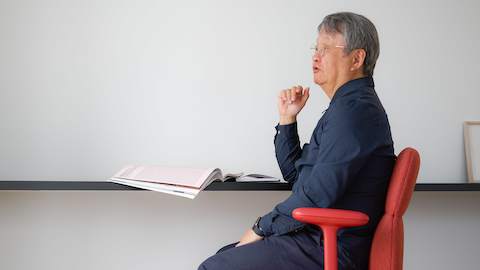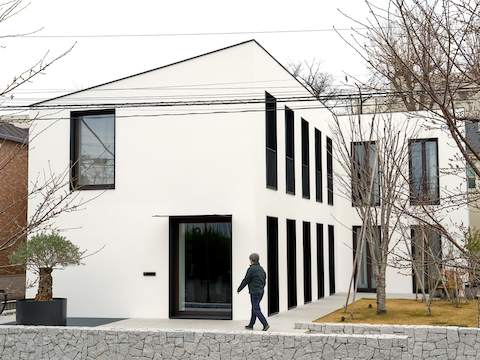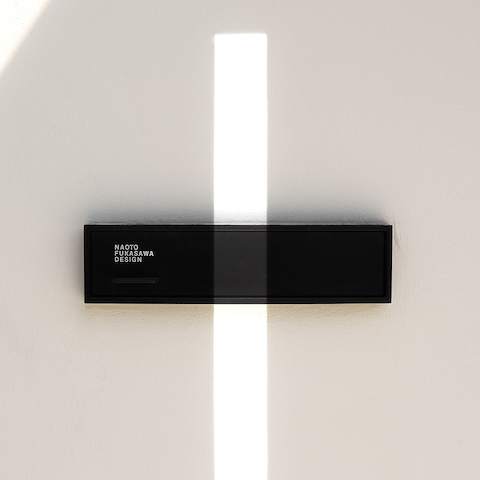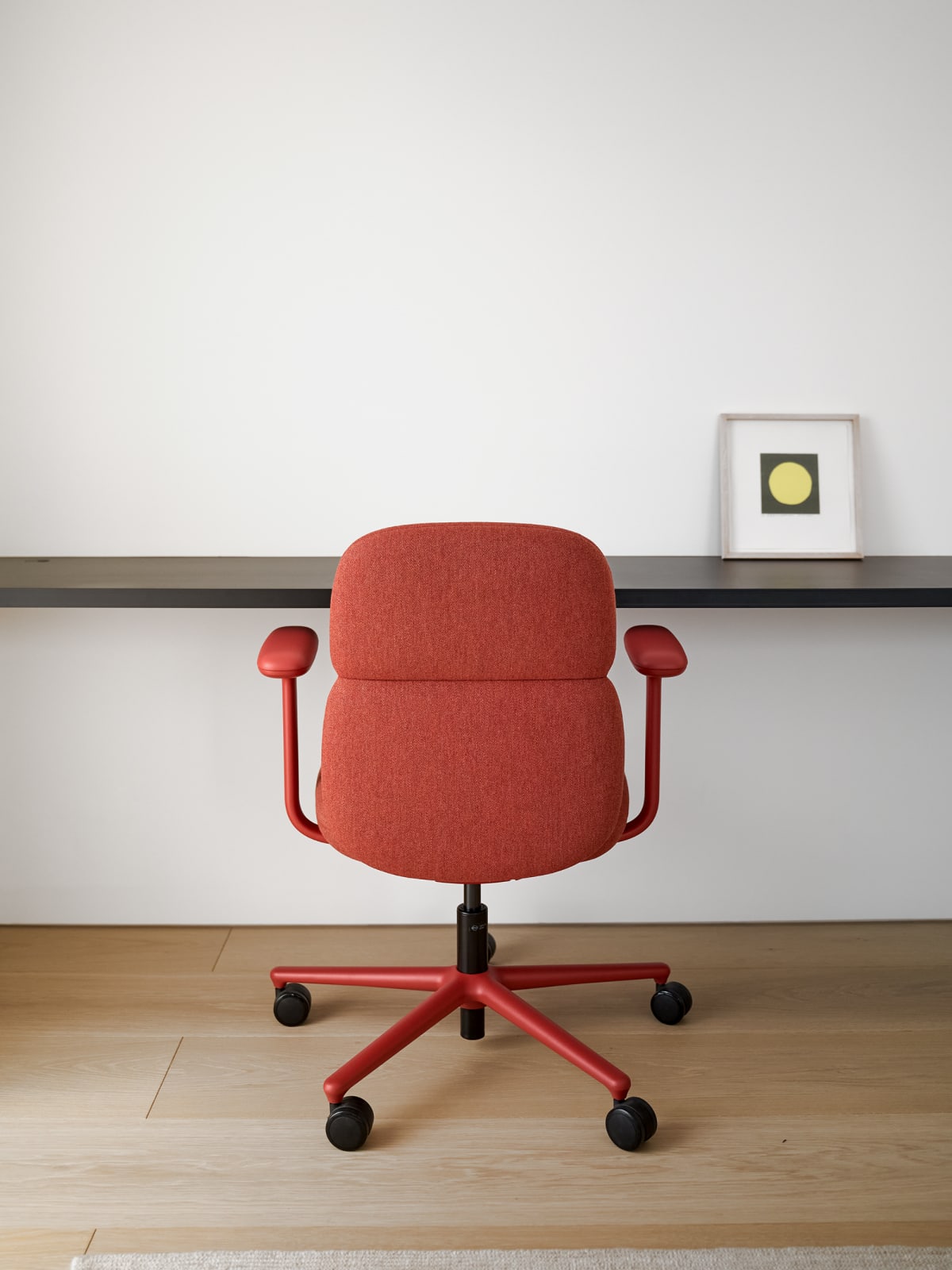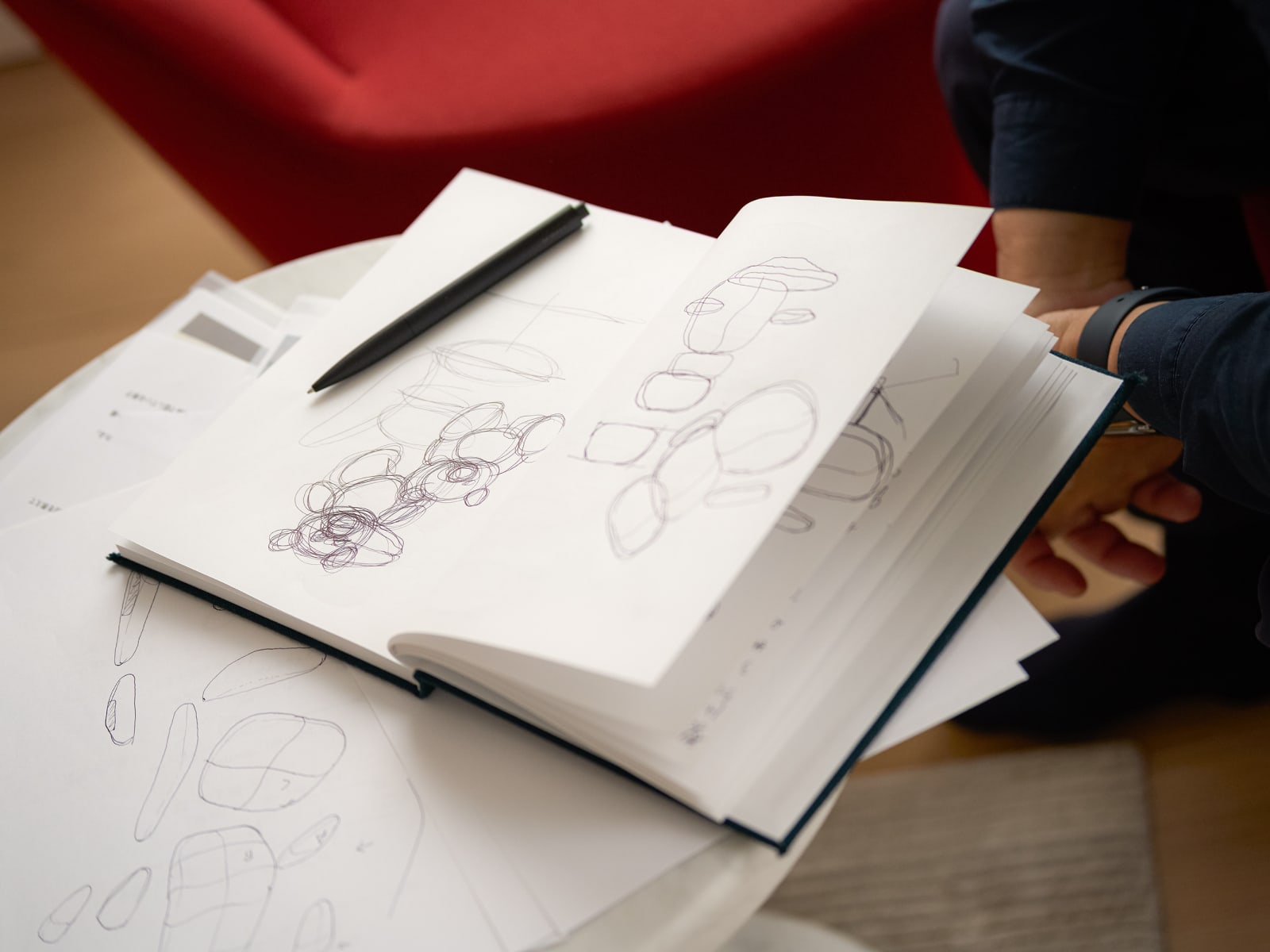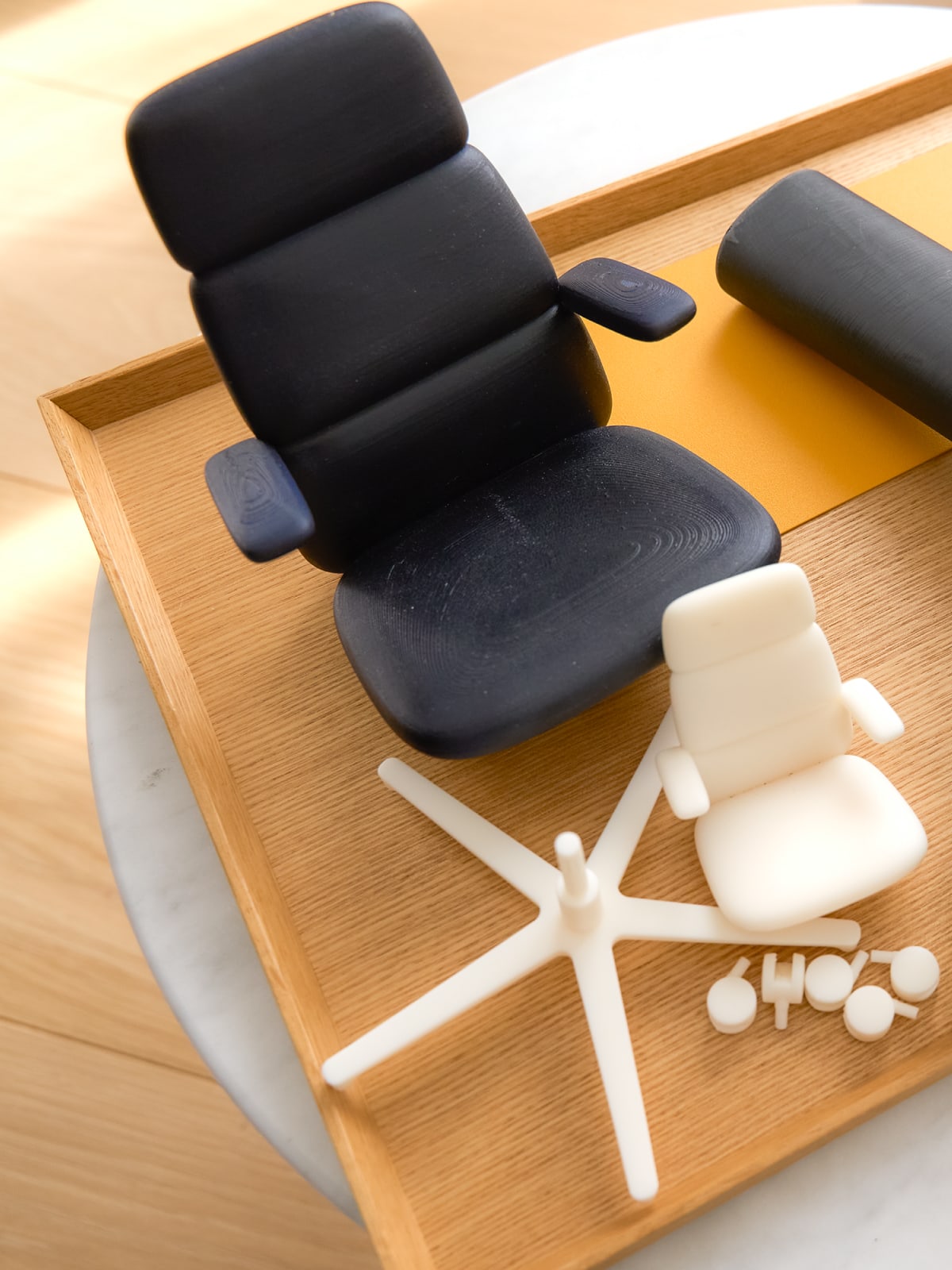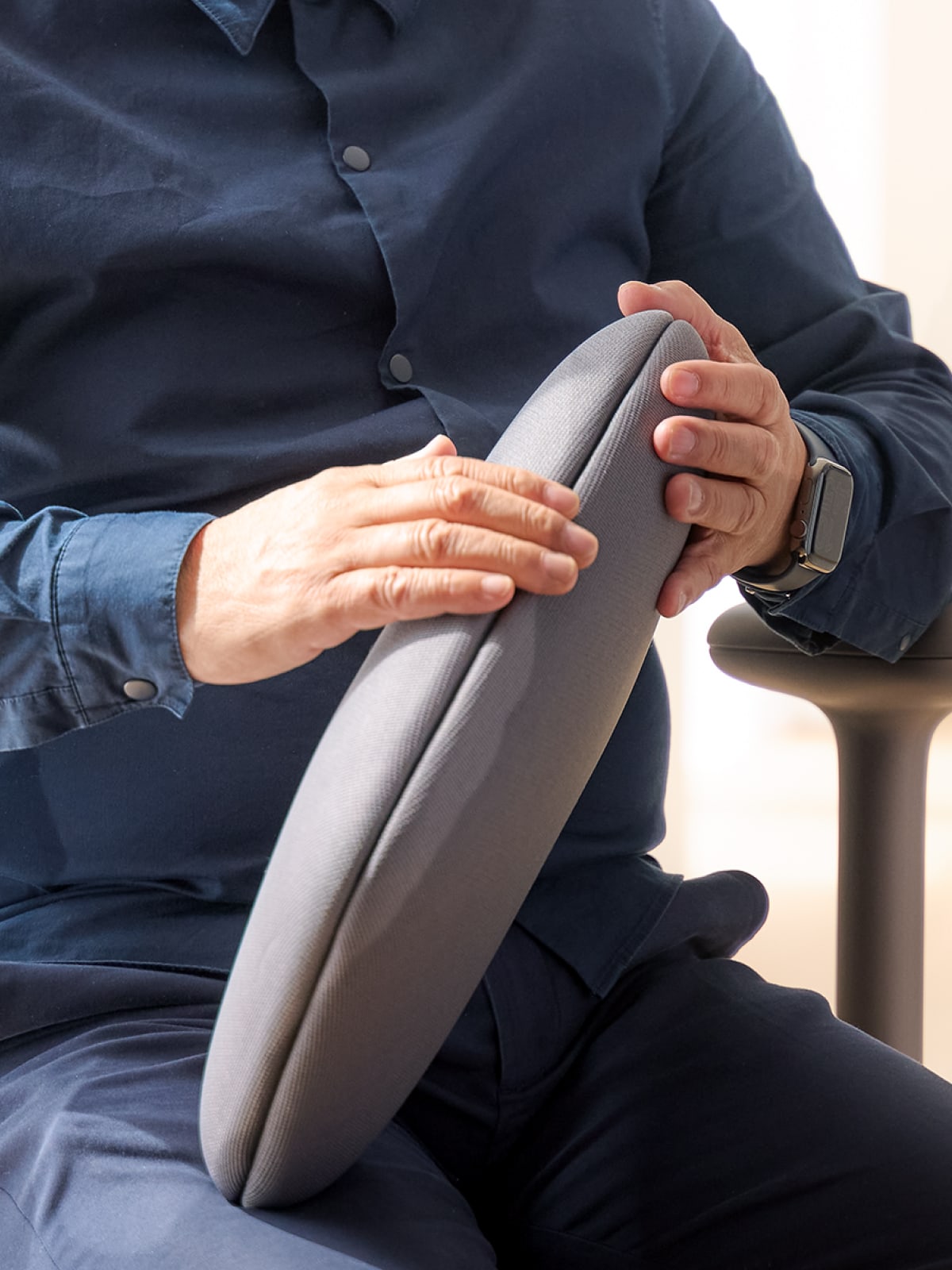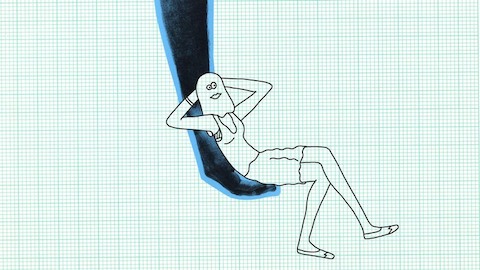Naoto Fukasawa sits with a bemused expression in a glass-walled conference room. An array of chairs of his own design are neatly arranged around a long wooden conference table. He's in Chicago for a short visit to debut Asari Chair by Herman Miller to the masses. His presence is quiet, yet captivating. He smiles easily, thanks everyone for visiting, is a gregarious salesman on the floor. Visitors sit in the chair, lean back comfortably to check out the tilt, do a little spin. There’s a song and dance to these kinds of visits and Fukasawa performs it naturally—almost joyfully—in a way that fills the whole room. At one point, he mimes hugging Asari, an expression he’s often used to describe his feelings about it. “I really want to hold the chair,” he says.
When he talks at length about his design process for Asari, it’s prescriptive of the passion he feels for the chair, which is like a character at this point in our story. Fukasawa personifies them as friendly creatures that delight you. The chair is, after all, inspired by its namesake: “clam” in Japanese (“short neck clam” to be precise, an ingredient often used in dashi, the clear soup stock that's a basic building block for umami in Japanese cooking. In essence, the very essence of flavor).
If you’re imagining these chairs in a fantastical story from the likes of Gabriel García Márquez or Haruki Murakami, well, then, he’s done his job. He sets the scene for these playful relationships and gives you the agency to make the chair work for you—wherever you want it to, not the other way around. It’s a simple relationship between the human, the object, and the environment and Fukasawa is just here to provide a comfortable seat.
Read on for the full interview with Fukasawa-san at his home and studio in Tokyo.
“The main goal is to make people happy.”
— Naoto Fukasawa
What is your definition of design?
If you have some relationship with an object, like a chair, for example—you should not really be conscious about it. You can forget about your chair. Unconsciousness is very important. You don't care about the chair; you already love your chair. After you use it, you don't need to think about it. Design is sometimes too much talking and should be quiet.
I always think about the relationship between the object and the human and the environment. Design is making a good relationship between them.
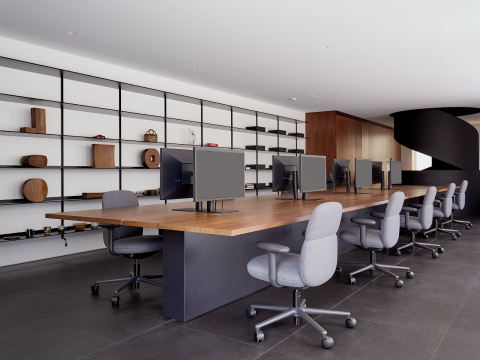
Tell us more about the philosophy “Super Normal.”
In general, people think about design that is special. Therefore, when we are designing, we try to be particularly special. And, of course, the person who asks us to design, they really want to get something new or radical or fresh. But sometimes we present very normal things, which they love and are already in their environment to use. They might say, “Oh, is this your proposal?” And it's super normal. So we say, do you like it or not? Then quietly, “I like it.”
We love to spend a life with normal things because normal is not so much about happening every day, it’s calmer, about spending a nice life. So that is a very key factor of the super normal. Super is important, not just normal.
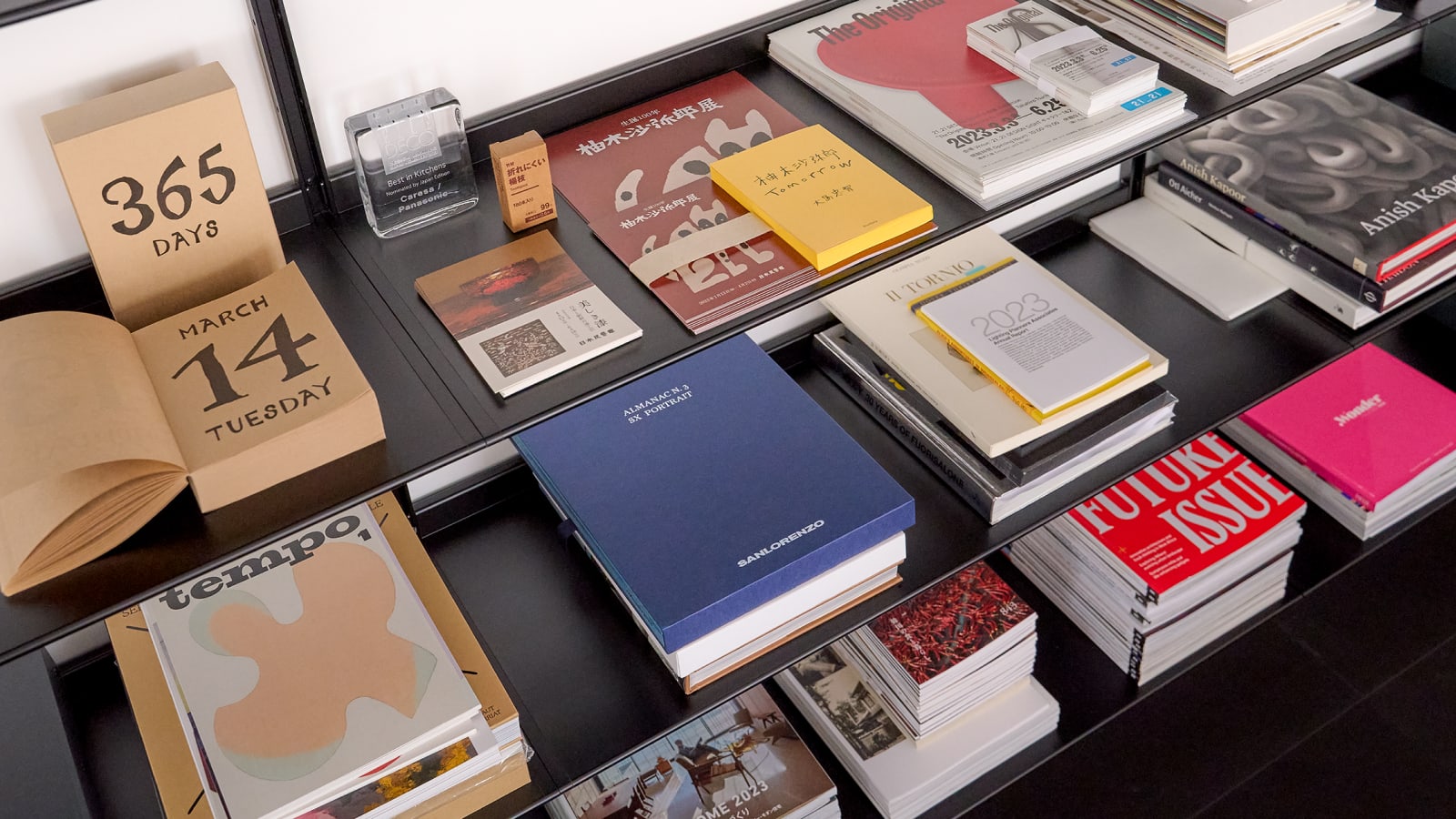
Various ephemera collected in his studio.
What is the relationship between form and function in your design?
Form is function. No distinction from each other. Visually, beauty is one of the functions too. So don't think about just the form, think about function first. But it has to be beautiful.
I believe all humans have this function to catch up the beauty or comfort [of a product]. Otherwise, we cannot really say, “This is good design. This is bad design.” Everybody says good designs, good design … bad designs, bad design, right? This is very basic: everybody can feel the good—not just particular, special people. Everybody has to feel it.
What is the importance of the shape and overall form of Asari?
Shape makes a meaning. We have to find the right form and outline to fit into the environment.
Life is a jigsaw puzzle. You fill in everything, but if you have a missing point—one piece of the puzzle, for example—then either we as a designer see the outline of the missing part or we create some form. Timing and environment give us the hint to make the right things.
Our life has been quickly changed, particularly since this pandemic. Of course, everybody already feels the lifestyle and working style should be changed. That's a great chance for us. Office chair, home chair was distinct. It was very clearly separate. Not always two different lifestyles, right? It's only one. We need to think about the connected world to use the same kind of furniture or chair. But now the life is insane, right? So you are working in a dining table at home. But the dining office is wood, it’s too hard for the long term. Why don't we bring such a comfort for the working office, but that looks like a home environment.
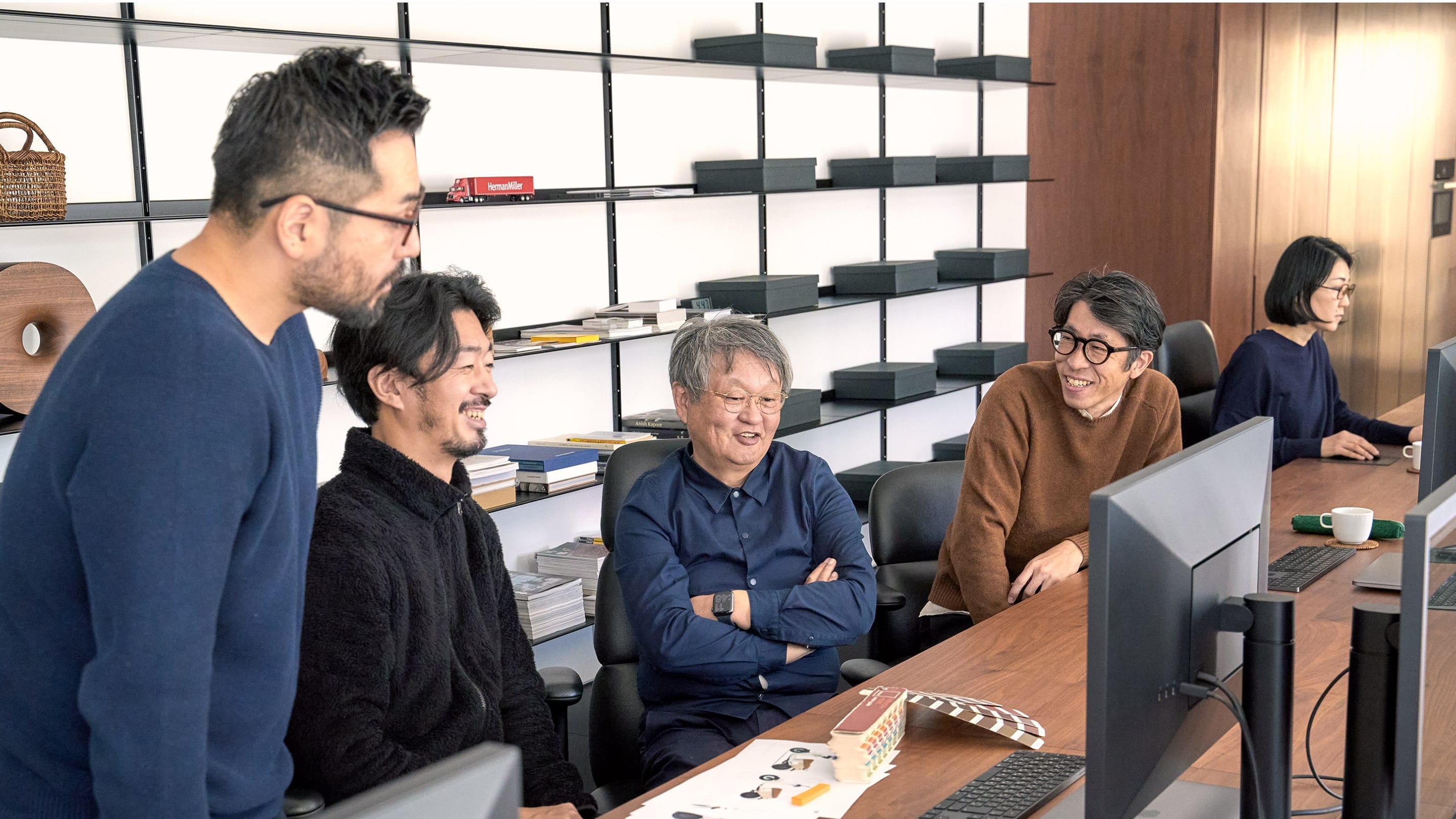
What was important to you about working with Herman Miller?
Responsibility for the human life is huge. Therefore, chair has to be comfortable, has to be healthy, and tested a lot, researched a lot to fit people all over the world. Herman Miller focuses on everybody.
Charles and Ray Eames’ philosophy is great: making and testing, making and testing. It’s also happiness, making happiness.
The name “Asari” comes from clam, in Japanese. What’s one of your favorite details about the chair?
You see the detail? No stitch exists. This is two shells getting together—that's where the Asari name comes from. Normally two shells get together in one, one parting line. That's a strong feature.
Maybe it’s quite rare to have this kind of detail, where it looks very comfortable, with no edges, no stitches. So, it looks very comfortable, very warm and soft and friendly. It is like a stuffed toy, a friendly form. I really want to hold it. That's a nice feeling.
Why Magazine
Meet Naoto Fukasawa, designer of Asari Chair by Herman Miller
Visit designer Naoto Fukasawa's home and studio in Tokyo and hear about the joyful design process behind the Asari Chair by Herman Miller.
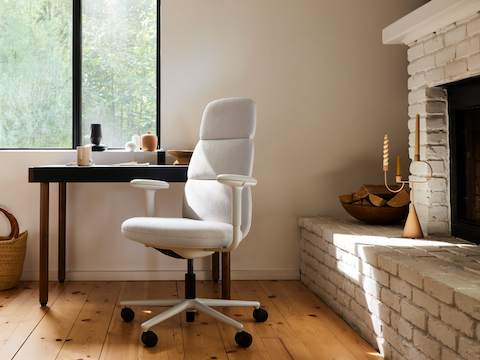
Get to know Asari
For both home and office, this ergonomic, upholstered work chair is a delight to the senses.
